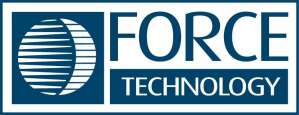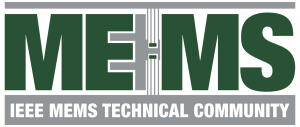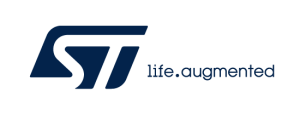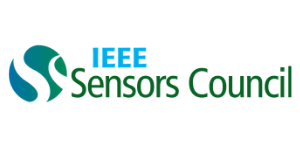No results found.
Speakers
Enabling Wi-Fi devices to act as sensors
Wi-Fi sensing is the use of Wi-Fi to enable everyday electronic devices to acquire information and become aware of their surroundings. Interest and research in the area has grown steadily over the past two decades, and Wi-Fi sensing is now used in a wide range of applications, including user presence detection, space occupancy analytics, and home security systems. Due to the significant and growing market interest in the area, a new IEEE 802.11 Task Group (IEEE 802.11bf) was recently formed to develop an amendment to the 802.11 standard that will enhance its ability to support Wi-Fi sensing applications. In this industry track talk, we examine the Wi-Fi sensing concept and consider the main definitions and features of the IEEE 802.11bf draft standard.
Clinical Internet of Things and TIPPSS - Trust, Identity, Privacy, Protection, Safety and Security
The current reality is that all the connected medical devices, wearables and systems we know and use today are hackable. We need to secure the data and devices through a new cybersecurity paradigm we call TIPPSS, which is the focus of the IEEE/UL P2933 standards working group on clinical IoT data and device interoperability with TIPPSS. The TIPPSS elements are as follows:
- Trust: allow only designated people or services to have device or data access;
- Identity: validate the identity of people, services and “things”;
- Privacy: ensure device, personal, and sensitive data are kept private;
- Protection: protect devices and users from physical, financial and reputational harm;
- Safety: provide safety for devices, infrastructure, and people;
- Security: maintain security of data, devices, institutions, systems, and people.
Sensors-Data Interoperability for Smart Agriculture
Digitization in agriculture has rapidly accelerated over the past decade and the pace of innovation continues to increase. Innovative technologies such as blockchain-based supply chain management solutions, Al-based digital agronomy, autonomous and semiautonomous machines, and loT/remote sensing solutions have created an overwhelming amount of information.
This talk will provide a brief update on current challenges and solutions for harmonizing and leveraging these data and provide a forward-looking vision to the opportunities to improve information flow in Agriculture to unlock operational improvements and accelerate innovation.
Advanced Photonics Pixel Architect Imaging Sub-Group, Analog, MEMS and Sensors Group STMicroelectronics
Sensors enabling the future
Sensors have undergone extraordinary proliferation since the beginning of the 21st Century.
Thanks to IoT, connected smart sensors can now be found all around us. This makes it possible to collect a wealth of data autonomously and continuously without human intervention, automating routine activities while unlocking previously unattainable insights and functionality. This has been defined as the Onlife era where smart devices improve the user experience and assist people in their daily lives with The Metaverse vision, Industry 5.0, and self-driving cars being prime examples.
Sensors, smart embedded actuators, analogue interfaces, connectivity, security and embedded AI, offer a perfect toolset for companies to continue to innovate. The semiconductor industry is driving this transformation and, in collaboration with key partners, creating the necessary synergies to bring these technologies to market. This is a particularly unique opportunity for MEMS and imaging devices, with embedded artificial intelligence, as they will be enablers for tomorrow’s products and services.
mm-Wave 🡪 sub-THz 🡪 THz sensing/monolithic systems commercialization: Paths and Promise.
In a rapidly changing world, continual advancements in low-cost, mainstream silicon-based processes, organic package technologies and research on low-loss materials have enabled operation in the millimeter-Wave 🡪 sub-THz 🡪 THz regimes. This has allowed for the THz frontier to be continually pushed for acceptable system-level performance. With broader operational bandwidths and sub-/millimeter scale elemental dimensions, the march is on towards constantly increasing frequency of operation while providing promise towards mass production and commoditization.
Our commercialization efforts extending the fronts on circuits, packaging, test and systems will be focused on this talk beginning with differentiated sensing product offerings in the millimeter-Wave space followed by next-generation sub-THz look-ahead studies. A focused literature survey covering progress made in extending state-of-art will conclude the talk demonstrating potential for implementing THz systems in mainstream, low-cost platforms.
IEEE ICAP Certification Program – Need for critical standards and certification in the areas of Sensor Interoperability and Cybersecurity
Interoperability and cybersecurity are the biggest impediments to the growth of the IoT sensor market. This session will provide audience with:
- Understanding of critical issues, risks, and threats that plague the sensor industry. From microchip to the cloud.
- Recommended solutions for both interoperability and cybersecurity.
- Most importantly, the audience will learn of IEEE plans in collaboration with the industry to implement them
Employing Photonics/Optics Based System Architectures on Next-Gen Platforms
Current airborne platform infrastructures/architectures for RF/EO/IR systems do NOT provide any means for commonality amongst the various apertures/antennas, and or processing components. A common infrastructure (including processing, and fiber based data distribution) for RF/EO/IR systems would reduce cost, schedule, and risk, for our future platforms.

















